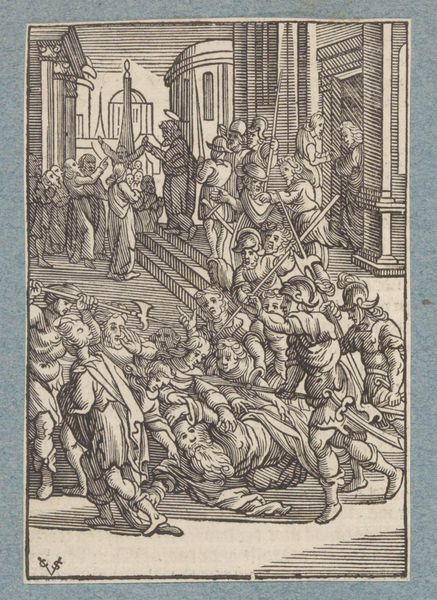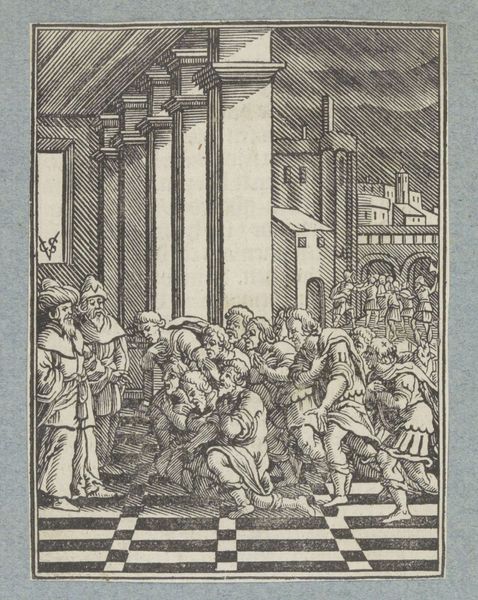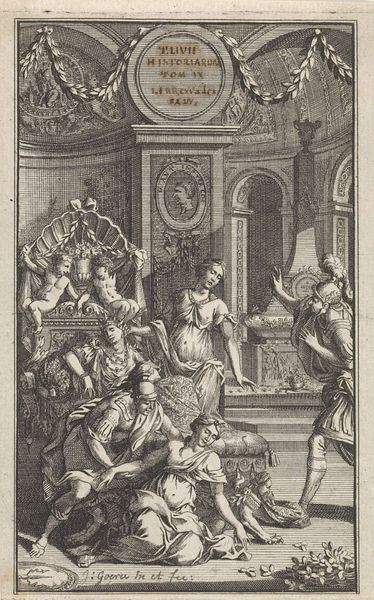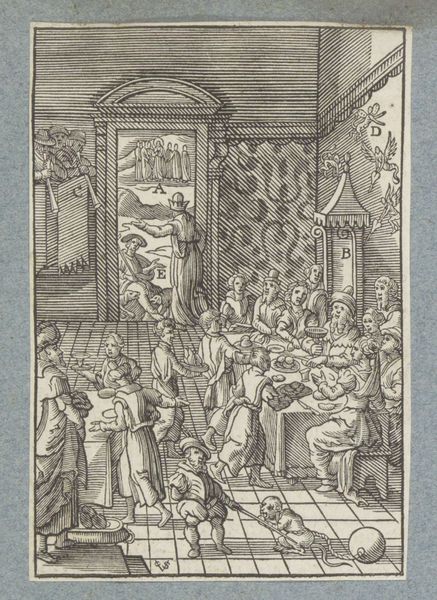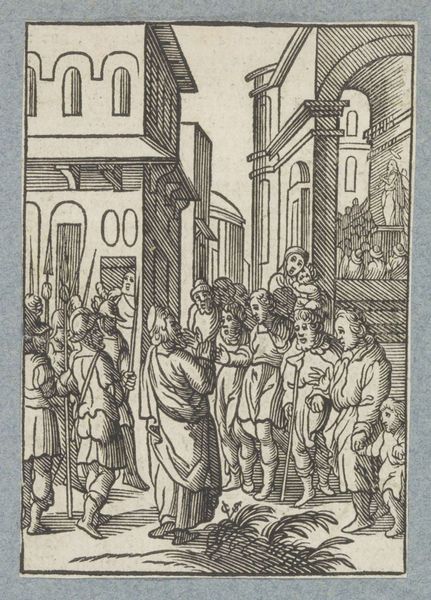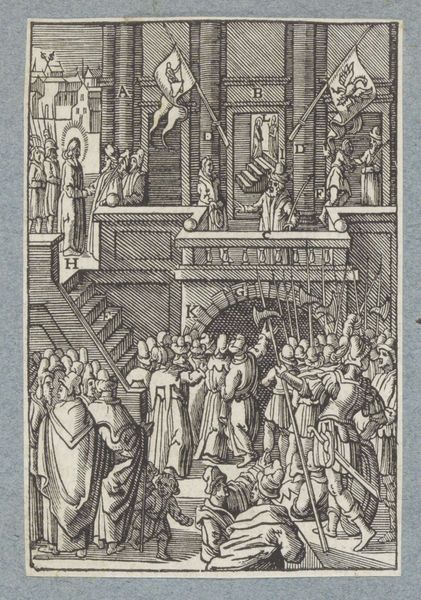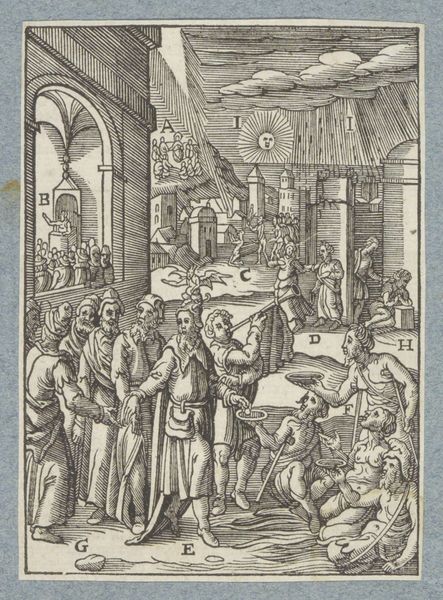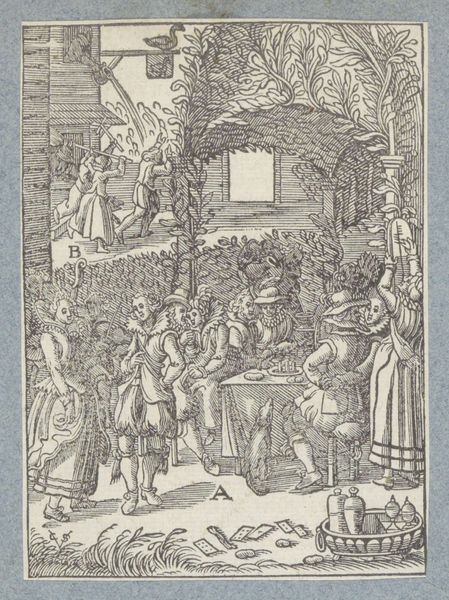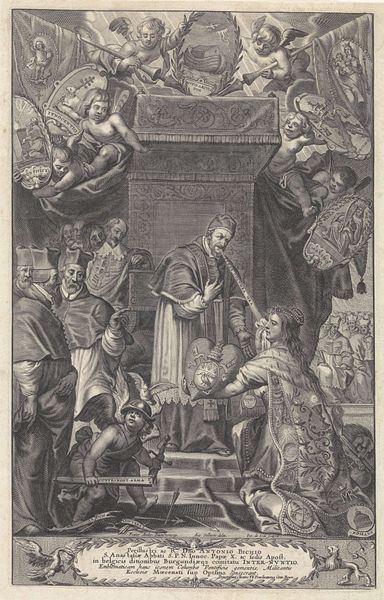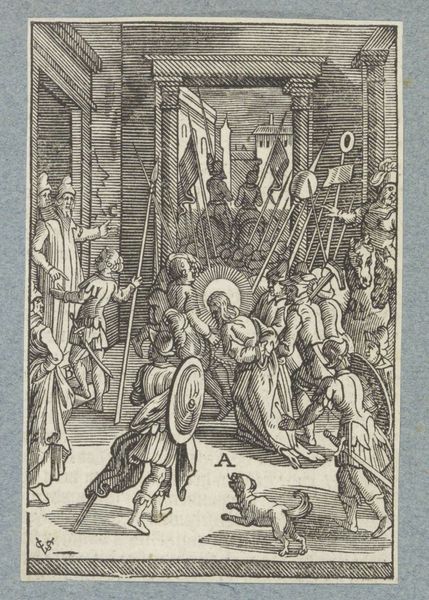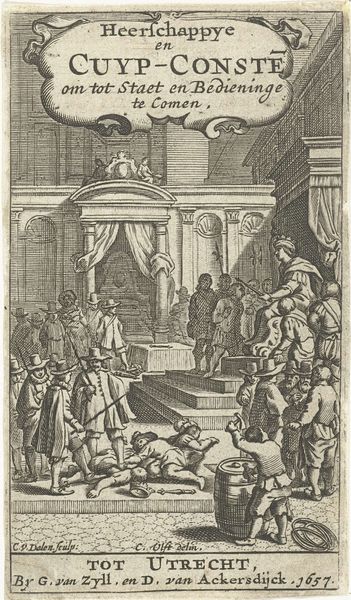
print, engraving
#
narrative-art
#
baroque
# print
#
figuration
#
history-painting
#
engraving
Dimensions: height 111 mm, width 75 mm
Copyright: Rijks Museum: Open Domain
Curator: Here we have "Geseling van Christus," or "The Flagellation of Christ," an engraving made in 1629 by Christoffel van Sichem II. The work currently resides in the Rijksmuseum collection. The density of the linework makes it appear almost monochromatic; its architectural interior creates an incredible illusion of depth for such a small format. What's your immediate reaction? Editor: A sense of pervasive, suffocating brutality. Look how Christ is positioned—slumped, encircled, dominated by figures brandishing weapons. Even the architecture presses down on him. The light seems only to highlight his vulnerability within this rigid social structure. Curator: Indeed, the piece places the viewer as a direct witness to Christ’s suffering. The visual construction—the encirclement by Roman soldiers and jeering figures—powerfully speaks to the abuses of power enacted against marginalized bodies throughout history. Consider the symbolism: a figure of supposed divinity utterly humiliated. Editor: Notice how Sichem uses the density of the lines to define not just form but also emotion. The heavier lines in the foreground create a sense of immediacy, while the sparser, more delicate lines in the background push those figures further away, visually emphasizing the compressed space around Christ. Semiotically, each character represents a type of oppression. Curator: And thinking about the historical context, the proliferation of prints like this served as crucial visual aids, reinforcing religious narratives and power dynamics within the culture. They shaped perceptions and strengthened communal bonds around specific theological interpretations, creating visual propaganda available for wide dissemination across society. Editor: It also underscores the powerful dialogue between light and shadow to communicate emotional distress and moral corruption. Curator: Precisely, a point so many social systems continue to benefit from by repeating patterns of the past, highlighting the continuing, agonizing tension in Sichem’s vision. Editor: After taking time with the image, the interplay of technical artistry and symbolic cruelty still reverberates deeply, almost a haunting premonition rendered with exquisite graphic skill.
Comments
No comments
Be the first to comment and join the conversation on the ultimate creative platform.
